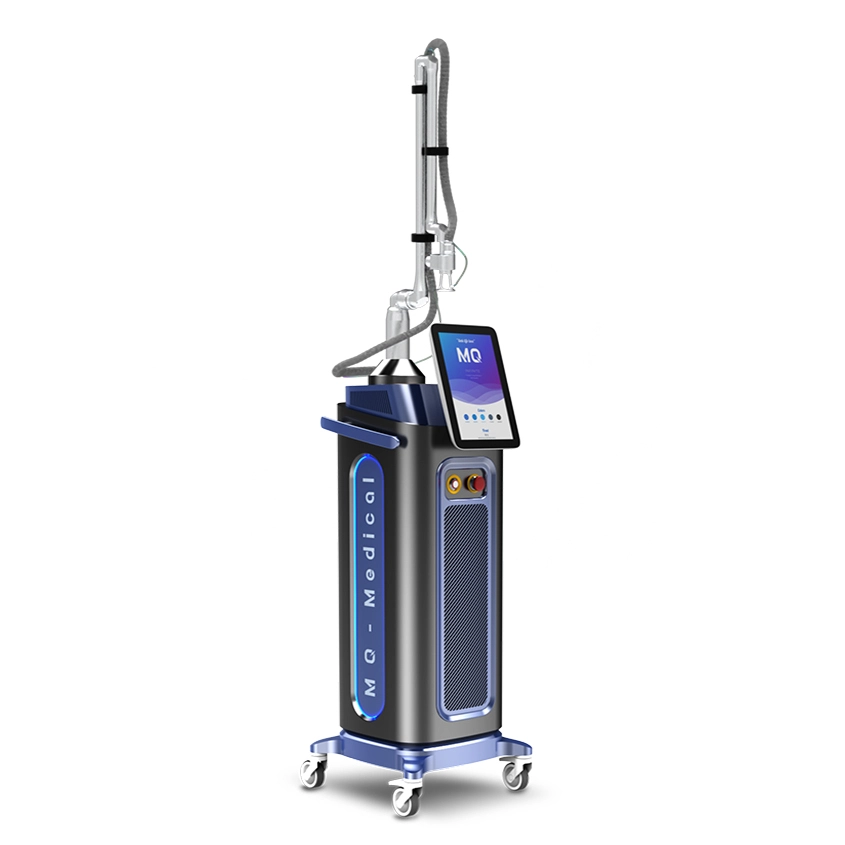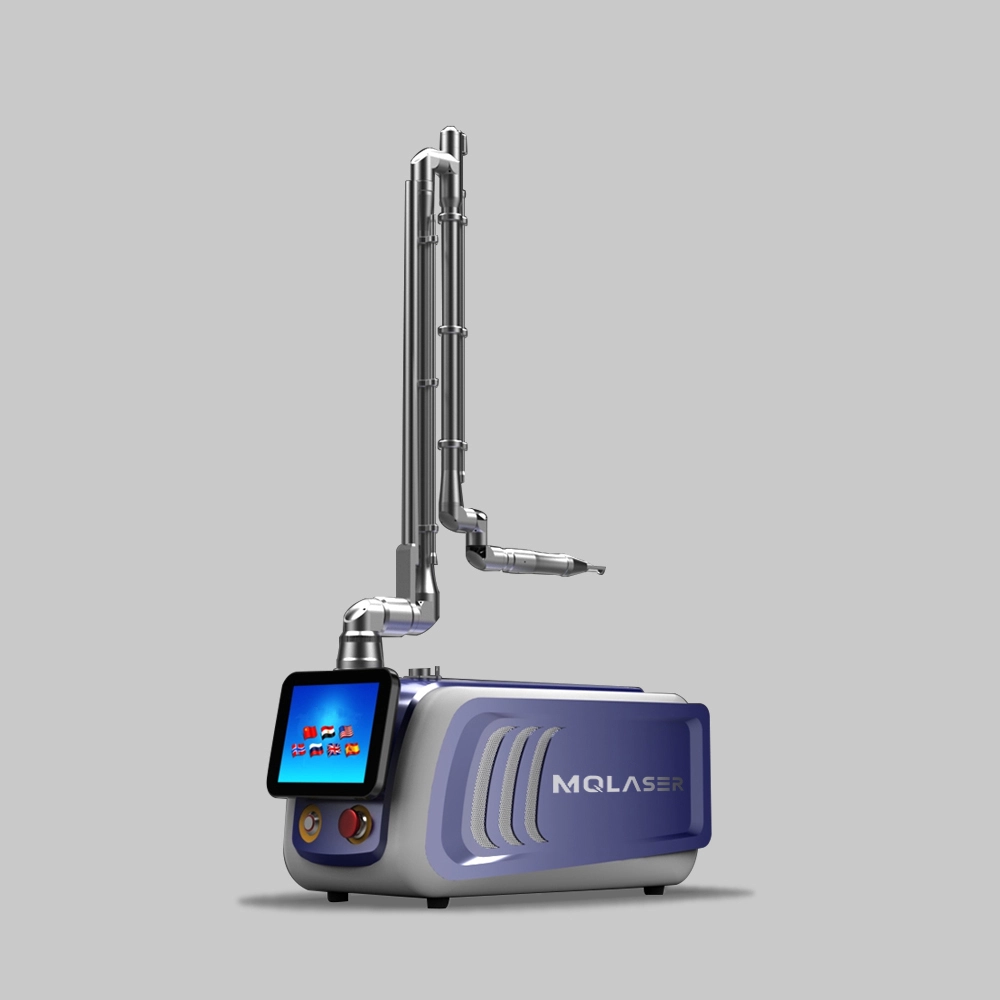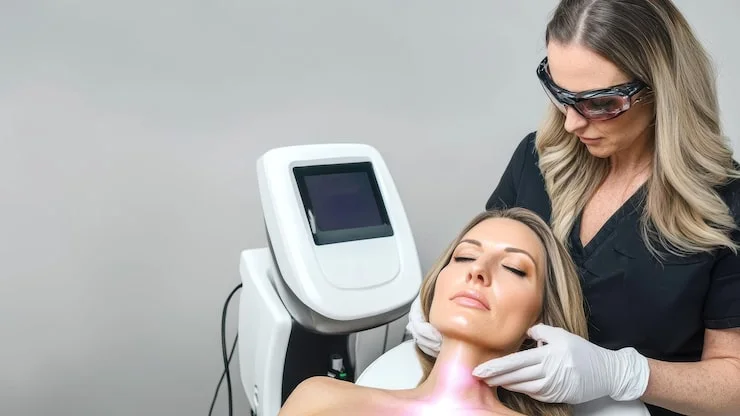
When investing in a fractional CO2 laser for a modern medspa, the device’s performance, safety, and profitability matter a lot. The laser source is key. But the beam delivery system—the scanner—really decides how well treatments work. This vital part separates top-notch systems that give great, steady results from basic ones that might bring risks or slow things down.
This article dives deep into comparing two main scanner types: the cutting-edge High-Speed Galvanometer Scanner and the older Traditional Low-Speed/Mechanical Scanner. Knowing this difference helps clinic owners and practitioners offer top-tier care.
The Engine of Performance: Understanding Scanner Technology
First, let’s get what a scanner does. In a fractional CO2 laser, the scanner is a clever setup of mirrors. It guides the laser beam onto the skin. It creates tiny treatment zones with precision. How fast, accurate, and smart this system is shapes the treatment’s safety, success, and speed. A scanner glitch can cause uneven results, more patient discomfort, or even side effects. So, it’s a big deal.
The Critical Divide: High-Speed Galvanometer vs. Traditional Low-Speed Scanners
The biggest leap in fractional laser tech is moving from mechanical scanners to galvanometer systems. A high-speed galvanometer scanner uses tiny mirrors on super-precise motors driven by electric current. These mirrors move fast—think microseconds! Meanwhile, a traditional scanner depends on bulkier, slower parts like servo motors or gears. These move the whole laser head or a heavy mirror setup.
This core design difference creates a huge gap in how they perform. Check the table below for details.
| Feature & Data | High-Speed Galvanometer Scanner | Traditional Low-Speed / Mechanical Scanner |
| Principle of Operation | Electromagnetically driven, lightweight mirrors for smooth, super-quick beam steering. | Physical movement of the whole laser head or a heavy mirror setup via motors, gears, or belts. |
| Typical Speed | Positioning Speed: >10 m/s Step Response Time: ~100–500 microseconds (µs) for a small angular step. | Positioning Speed: <1 m/s Step Response Time: Measured in milliseconds (ms), 10–100x slower. |
| Positional Repeatability | Super Precise: <5 microradians (µrad). Dots land exactly where planned, every time. | Less Reliable: Prone to mechanical wear, backlash, or shakes, causing uneven patterns. |
| Heat Management | Awesome: Uses “random” or “spray” patterns to spread laser dots, giving skin time to cool between pulses. | Weak: Often stuck with line-by-line patterns, building up heat at turns. |
| Pattern Versatility | Endless Options: Can whip up shapes like squares, circles, or hexagons and tweak density instantly. | Very Limited: Stuck with a few basic, pre-set patterns and little flexibility. |
| Reliability & Lifespan | Rock-Solid: No-friction design means less wear and steady performance for years. | So-So: Mechanical parts wear out, needing frequent fixes and tweaks to stay accurate. |
Clinical and Business Implications: Why the Scanner is a Game-Changer for Your Medspa

The table’s tech details lead to real-world perks for your practice. Picking a device with a better scanner isn’t just a tech upgrade. It’s a smart business move.
Enhanced Treatment Efficacy and Safety
The precision of a high-speed galvanometer scanner is a game-changer. Its intelligent heat control stands out. By scattering laser dots in a random pattern, it cuts down on tissue overheating. This lowers the risk of post-inflammatory hyperpigmentation (PIH), especially for darker skin tones. Plus, patients feel less pain and recover faster. It’s safer and more comfortable.

Increased Throughput and Profitability
Speed saves time. A high-speed scanner finishes treatments way quicker. For example, a full-face resurfacing takes less time, so you can see more patients daily. This boosts your clinic’s income. What’s more, faster sessions mean happier clients. That speeds up your return on investment (ROI) for the device.
Broader Range of Treatments
A high-speed scanner is super flexible. It lets you switch from intense patterns for deep acne scars to gentle ones for a quick “weekend peel.” You can tailor treatments to each patient’s needs. This means you can offer more services without buying extra machines. It’s a win for your practice.
MQLaser’s Commitment to Excellence
At MQLaser, we know great results come from top-tier tech. That’s why our fractional CO2 laser lineup, including the powerful Depplus Stationary Fractional CO2 Laser and the handy Portable Fractional CO2 Laser, uses high-speed galvanometer scanners. We are committed to providing medspas with devices engineered for superior performance, long-term reliability, and maximum profitability.
Depplus Stationary Fractional CO2 Laser

Engineered as a stationary powerhouse, the Depplus is built for clinics demanding maximum stability and high-volume performance. Its robust 360° light-guiding arm ensures unwavering precision during intensive treatments like deep scar revision. This dedicated workhorse is the ultimate solution for a practice prioritizing power in a fixed setting.
Portable Fractional CO2 Laser

Delivering the same core technology in a compact form, this portable laser offers unmatched versatility. It is the ideal solution for clinics with limited space or the need for mobility between treatment rooms. This machine ensures powerful, flexible performance without the large footprint of a stationary unit.
FAQs
Q1: For treating deep acne scars, isn’t a slower scan better?
A: Not true. Depth comes from the laser’s energy per pulse (fluence), not scan speed. A high-speed scanner delivers that energy with pinpoint accuracy. It avoids excess heat damage that slow scanners might cause. This leads to smoother healing and better scar improvement.
Q2: Does a high-speed galvanometer’s complexity make it less reliable?
A: No way. These scanners are solid-state, with no rubbing parts. That means less wear and tear. They stay accurate longer than mechanical systems, which need constant upkeep due to moving parts.
Q3: Can a high-speed scanner really boost ROI?
A: Absolutely. First, it cuts treatment times, letting you serve more clients daily. That means more cash flow. Also, better safety and results make patients happier. Happy clients come back and spread the word, growing your medspa’s success.
















